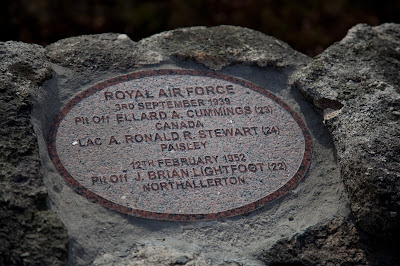The Little History of Aberdeenshire - by Duncan Harley
In 'The A-Z
of Curious Aberdeenshire', I exposed readers to a random series of tales from
the North-east of Scotland.
Factual stories about The Beatles very first tour of Aberdeenshire, a resume of the career of sporting superstar Donald Dinnie and a startling description of the 1916 terror-bombing of the village of Insch by a 300ft long German Zeppelin sat side by side with mythological tales about the Maiden Stone at Crowmallie, the tomb of Eth the Swift-foot at Kellands and the mysterious mound of death at the Bass.
My intention in this new volume is to provide the reader with a few more snippets from Aberdeenshire’s colourful history. I have succumbed to the temptation to re-visit some of the stories featured in my previous book and trust that I will be forgiven for expanding greatly on those tales. The Blenheim of Buchan, a full expose of the Aberdeen typhoid scandal plus an expanded tale of artist-priest Peter Anson’s life in the North-east are examples.
Tales about the Beaker People, those blue painted warriors of ancient Pictland and the northern invasions of the men from Rome lead the reader gently through the early history of the area. Stories of bloody battles, agricultural improvements, wars and industrial revolution take us up to the present day where, instead of taking to arms on gore-splattered battlefields, Aberdonians are willing participants in that economic game sometimes termed the hunt for the black gold.
Along the way there are a couple of 20th century conflicts and tales of religious and economic change. In short, The Little History of Aberdeenshire begins at the beginning and ends at the end, at least as we know it so far. As for the actual county of Aberdeenshire, where does it begin and indeed where does it end. Local government boundaries and parliamentary constituency lines change with the winds of political whim and in past times county boundaries were quite uncertain.
I have tried, where practicable, to keep within current political boundaries. However please forgive the occasional foreign foray into the ancient lands of Greater Grampian. Those pesky Romans and those proudly possessive Picts cared little about such petty boundary restrictions.
The labels Aberdeenshire, the North-east and Grampian are variously used to refer to the County of Aberdeenshire within this volume. As always, please enjoy these wee snippets from history. Please dip into these pages and smile gently at the past.
Factual stories about The Beatles very first tour of Aberdeenshire, a resume of the career of sporting superstar Donald Dinnie and a startling description of the 1916 terror-bombing of the village of Insch by a 300ft long German Zeppelin sat side by side with mythological tales about the Maiden Stone at Crowmallie, the tomb of Eth the Swift-foot at Kellands and the mysterious mound of death at the Bass.
My intention in this new volume is to provide the reader with a few more snippets from Aberdeenshire’s colourful history. I have succumbed to the temptation to re-visit some of the stories featured in my previous book and trust that I will be forgiven for expanding greatly on those tales. The Blenheim of Buchan, a full expose of the Aberdeen typhoid scandal plus an expanded tale of artist-priest Peter Anson’s life in the North-east are examples.
Tales about the Beaker People, those blue painted warriors of ancient Pictland and the northern invasions of the men from Rome lead the reader gently through the early history of the area. Stories of bloody battles, agricultural improvements, wars and industrial revolution take us up to the present day where, instead of taking to arms on gore-splattered battlefields, Aberdonians are willing participants in that economic game sometimes termed the hunt for the black gold.
Along the way there are a couple of 20th century conflicts and tales of religious and economic change. In short, The Little History of Aberdeenshire begins at the beginning and ends at the end, at least as we know it so far. As for the actual county of Aberdeenshire, where does it begin and indeed where does it end. Local government boundaries and parliamentary constituency lines change with the winds of political whim and in past times county boundaries were quite uncertain.
I have tried, where practicable, to keep within current political boundaries. However please forgive the occasional foreign foray into the ancient lands of Greater Grampian. Those pesky Romans and those proudly possessive Picts cared little about such petty boundary restrictions.
The labels Aberdeenshire, the North-east and Grampian are variously used to refer to the County of Aberdeenshire within this volume. As always, please enjoy these wee snippets from history. Please dip into these pages and smile gently at the past.











Comments
Post a Comment